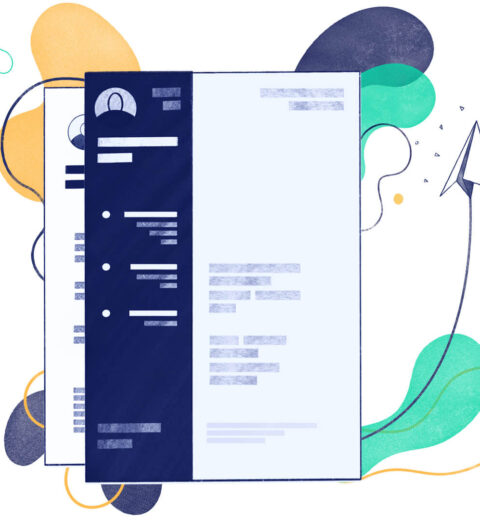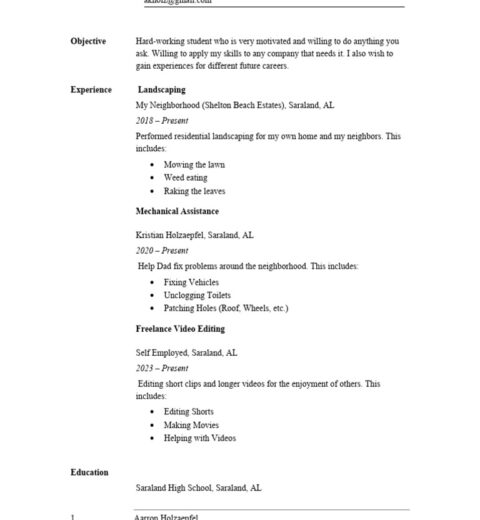In the competitive landscape of job hunting, crafting a compelling resume is paramount. One of the most pressing questions that candidates grapple with is: how far back should a resume go? While there is no universal answer, understanding industry standards can provide clarity and facilitate more effective self-presentation.
Typically, a resume chronicles a person’s career journey, highlighting relevant work experiences, skills, and accomplishments. Generally, it is advisable for candidates to include their last 10 to 15 years of professional experience, as this range effectively represents one’s most pertinent skills and the trajectory of career growth. However, this guidance may fluctuate based on various factors, including industry norms, unique career paths, and individual circumstances.
To begin dissecting this query, it is essential to consider the industry in which one is seeking employment. Fields such as technology and marketing, which evolve rapidly, may prioritize recent experience more significantly than traditional sectors like education or healthcare, which may value longevity and service history. In fast-paced industries, employers often look for familiarity with current tools and methodologies, thus making recent experiences more relevant.
For instance, a software developer may only need to showcase their last five to seven years of experience—especially if this period encapsulates rapid technological advancements. In contrast, an educator might include a more extensive timeline, spanning two decades or even more, to demonstrate a depth of knowledge and expertise in instructional strategies and classroom management.
When constructing a resume, it is advisable to place heavier emphasis on roles that align closely with the job being pursued. Hiring managers tend to focus on relevant experience that illustrates a candidate’s capacity to excel in the particular role advertised. Therefore, when filtering through past employment, candidates should prioritize positions that exemplify pertinent accomplishments or transferable skills, even if they fall outside the 10 to 15-year guideline.
In specific professions, longevity in one role can be a distinct asset. For example, a candidate who has spent several years at a single institution may wish to showcase that dedication and expertise, devoting extra space in their resume to illustrate various projects or advancements undertaken during that tenure. This strategy helps to substantiate their commitment and ability to thrive in a stable work environment, which can resonate positively with certain employers.
Career changers face unique challenges concerning resume chronology. They may have significant experience in a previous field that may not appear relevant to prospective employers. For these candidates, it would be prudent to encapsulate the most relevant roles, potentially extending beyond the typical 15 years if substantive achievements can be framed in a way that emphasizes transferable skills relevant to the new career path. Highlighting similarities in skill sets and responsibilities is essential in articulating why older experiences are still applicable.
Moreover, for those in the early stages of their careers or recent graduates, it can be challenging to provide a robust work history. In such cases, including internships, volunteer work, and relevant coursework can fill in the gaps. A fresh graduate might not have extensive experience but can certainly outline relevant academic projects or part-time roles. These entries can be positioned prominently in the resume to showcase competence and readiness for the job market.
A critical aspect of determining how far back to go involves assessing the relevance of certain jobs. Positions held many years ago that are not connected to the desired position need not be included. In this regard, focusing on achievements, skills, and specific contributions can often take precedence over merely listing job titles. Instead of a chronological account of every position held, consider the use of a functional or hybrid resume format that emphasizes skills and contributions over dry timelines.
While crafting the content, clarity and brevity are vital. Each entry in the employment history should concisely convey the role, the organization’s name, and the duration of employment—the latter generally formatted as month/year to month/year. Bullet points can be utilized to relay specific responsibilities or achievements, ideally beginning with strong action verbs that visually entice the reader. This practice creates an engaging narrative about one’s professional journey while keeping the reader’s attention.
Finally, meticulously reviewing one’s resume for errors is non-negotiable. Typos or formatting inconsistencies can undermine the professional image that one seeks to project, suggesting a lack of attention to detail. Furthermore, tailoring each resume version to the particular position applied for can significantly improve the chances of gaining an interview. Customization helps demonstrate genuine interest in the position and solidifies the candidate’s alignment with the organization’s goals.
In conclusion, determining how far back a resume should go hinges upon various factors including industry standards, relevance, and individual work history. The general guideline of 10 to 15 years serves as a compass for many, but ultimately, candidates must curate their experiences to showcase their qualifications effectively. Balancing the breadth of experience with an acute focus on relevancy is the crux of presenting oneself in the best possible light. By adhering to these principles, job seekers can adeptly navigate the winding path of employment opportunities with confidence and clarity.




